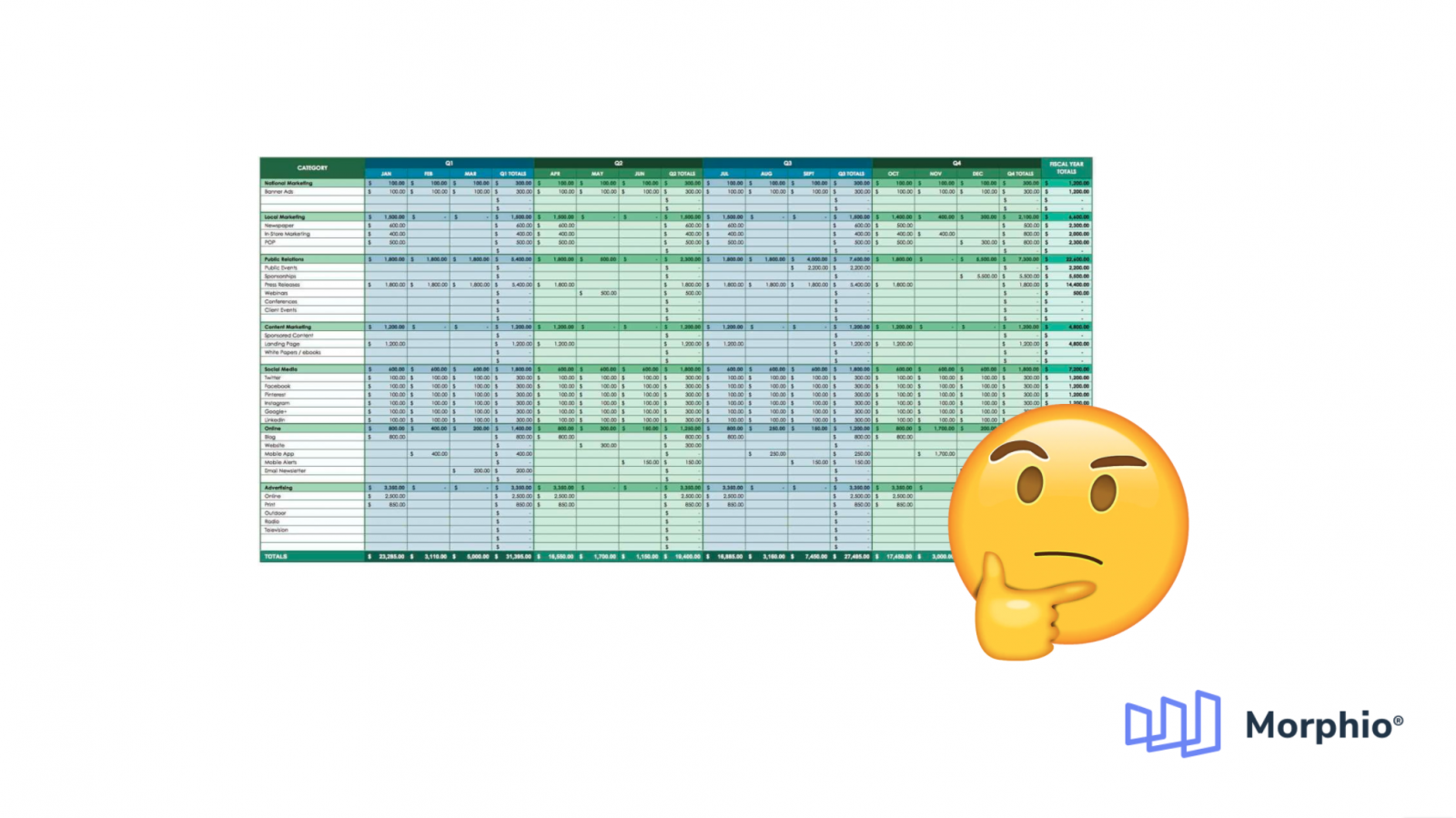
Tracking digital media spend across digital ad platforms has never been more important. This is largely in part due to the ongoing fracturing of the digital ad ecosystem, as advertisers diversify from ever-present mainstays, Google and Facebook, in search of younger demographics. For agencies, the challenge of keeping a handle on what is being spent where and when is taking up more and more time. PPC overspend is an issue that blights our industry, yet the typical systems that attempt to control this increasing (and expensive) problem are inadequate and just as prone to the human error that necessitates controls in the first place. I am of course talking about tracking spend on spreadsheets.
I’ve worked at agencies that have used the spreadsheet method and every one consistently runs into the same, pretty fundamental, issue: it was labor intensive and didn’t stop errors happening. I’m going to examine some of the pitfalls of the spreadsheet method here, but this is in truth a thinly veiled plea to agencies and digital marketers to take budget monitoring seriously. As a potential risk, it deserves more attention and investment.
Manual Data Entry
The first thing required to ensure that a spreadsheet is capable of tracking spend against a target is pulling in all that data. This is often done via manual input. Setting aside the resulting woeful inefficiencies you’re inflicting on your digital marketing team, the reality is manual input is highly prone to errors. Especially in an environment where exposure to the source data is fractured. If you’re relying on manual data entry, you’re effectively just pushing the risk up a level. Now things have to go wrong on the platform and they have to be documented incorrectly. But that is still entirely possible.
Paying for API Pulls
So to avoid the risks inherent in manual data entry, you decide to pay for a service that’ll port the data into your spreadsheet for you. That you’ve decided that this is an issue worthy of investment is definitely a positive step, but in this instance you are paying for dumb data. By that I mean, they are just data points, and there is a lot of work involved to contextualize it in a way that makes it valuable. Is it possible? Of course. But if you’ve decided to invest to solve the problem, wouldn’t it make more sense to invest in smart data upfront?
Maintenance
Well let’s say you decided against manual data entry, invested in a tool that integrates your ad platform APIs with a spreadsheet, and you’ve gone through the effort of creating an elaborate infrastructure of vlookups and nested formulas to give the data the context it needs to be useful. Now what? Well now, get ready for the maintenance workload. There is no ‘set it and forget it’ to custom built spreadsheets and troubleshooting errors is a painful process. So what hours you might have been saving for foregoing manual data entry, you’ll quickly stack up in maintenance.
There is a good chance that if you’ve attempted to track spend via spreadsheets, or if you’re doing it right now, that the above issues will ring true. They certainly ring true with me, because I lived with them all at previous agencies until one of those agencies decided to build out an actual piece of software to handle it. That piece of software is Morphio.
I’m aware that financial commitment to a problem like budget monitoring can be tough to swallow. Often what motivates formal moves to minimize risk, is having gone through the agony of having to write out a cheque to an angry client after going over budget – and I suppose that’s the best way to present the value proposition of dedicated budget monitoring software. Offset those costs against having to never write another make-good cheque, or against the hours and hours your team will save by not having to manage a spreadsheet. They’ll thank you for it.